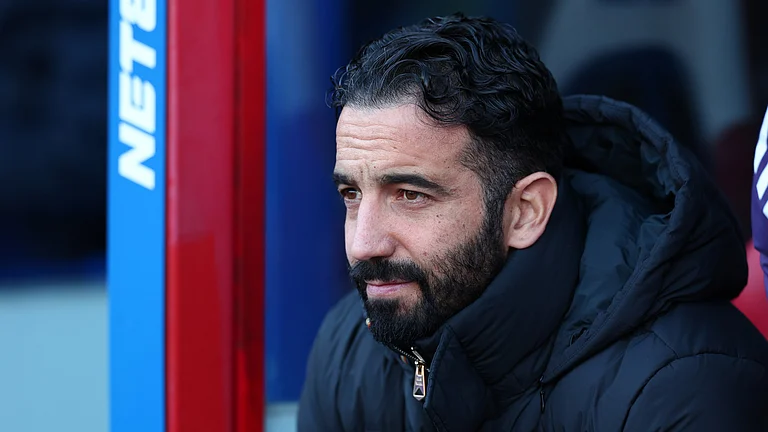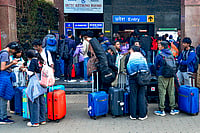Air pollution has for long been viewed as an environmental or chemical issue. In reality, it is a major human health issue, causing disease, disability and premature death of 7 million people globally every year. We breathe 25,000 or more times every day, inhaling 10,000 or more litres of air. It is a basic body function meant to sustain life. But today, breathing kills. The very air meant to sustain life is killing us, because of the presence of pollutants in it, which are poison for our body and damage our health badly. In India, 93 per cent of children breathe air which is below WHO standards. Over 25 per cent deaths in children under 5 are directly or indirectly related to air pollution. WHO director Dr Maria Neira has termed it “a global public health emergency” while the WHO director-general has termed it “the second tobacco epidemic”.
As a chest surgeon, I have been operating on lungs for over 30 years and have noticed a drastic change in the colour of lungs. Normal lungs are supposed to be pink, but that’s a rarity today, even among teenagers and non-smokers. Black deposits that I see on the surface of lungs are a grim reminder to the presence of poison in the air we are breathing.
The key documented sources of air pollution are burning of fossil fuels or wood, automobile exhaust, burning of garbage and landfills, smoke-emitting industries, especially coal-fired power plants, and dust from construction sites and roads.
Air pollution is a pan-India problem. Although Delhi has been in the news the most, that’s as much because of better air quality monitoring in the city as also because its status as the national capital.
According to WHO, 14 of the world’s 20 most polluted cities are in India. Thus, air pollution is a pan-Indian problem, playing havoc with the lives of millions of Indians. It is adversely impacting brain and lung development of our children, and causing millions of premature deaths. As someone who sees the health impact of air pollution with his own eyes every day, it is nothing short of a national health emergency.
The Covid pandemic has also brought air pollution into focus, as polluted areas have been reported to have higher infection and mortality rates due to Covid. While Covid has killed nearly 5 million people globally till now and brought the world to a standstill, air pollution kills over 7 million people prematurely every year, year after year, but does not receive commensurate attention and response from the government and political parties.
Political parties are busy blaming each other, and while various measures are being taken by the government, they are no match for the enormity and gravity of the problem. There are various laws and rules, but they are openly flouted by people. The ground reality is that the situation is continuously worsening year after year with no improvement in sight.
Masks, air purifiers and now smog towers have been proposed as solutions to air pollution. The reality is, apart from N95 and N99 masks worn snugly around nose and mouth, none of the other masks—especially those made of cloth—are of any use. Although they trap most of the particulate matter, gases still pass through. However, it gives protection only as long as it is worn. Meanwhile, it tends to suffocate and cause a rise in CO2 from re-breathing when worn for long periods.
Thus, while masks may be OK for short periods, like when one is passing through a polluted area, it is not a long-term solution. Air purifiers can only help the minuscule number of people who can afford these, that too, only when inside. Smog towers are a colossal waste of precious public money and have not been found useful anywhere in the world.
The real solution lies in identifying the sources and fixing the problem there. The sources are smoke and dust. Thus, anything that is producing smoke or causing dust to be added to air—is a cause of pollution. Its rectification is the only solution. People are often looking for a magic, quick-fix solution for their problems. Unfortunately, there is none.
Burning of fossil fuels (in industries as well as transport), apart from burning of garbage, is the biggest source of smoke today. A rapid decline in the use of fossil fuels via a shift to cleaner sources of energy (solar) is the only long-term answer. This means mass-scale shifting from today’s maddening increase in number of vehicles in our cities, and significant reduction in the amount of municipal waste we generate, coupled with better disposal of that waste.
These changes will be resisted by people as it would mean a major shift in our lifestyles. However, the problem of air pollution has today reached menacing levels. No matter how difficult the actions required to contain air pollution are, the cost of inaction will be disease, disability and death—too high a price to pay for something we can fix by our collective efforts.
The time to act was yesterday. But it is still not late. As we rebuild our economies, post-Covid, let green be the guiding mantra.
(This appeared in the print edition as "The Time to Act Was Yesterday")
(Views expressed are personal)
ALSO READ
Dr Arvind Kumar is a thoracic surgeon and chairman of Institute of Chest Surgery and Lung Transplantation at Medanta






















